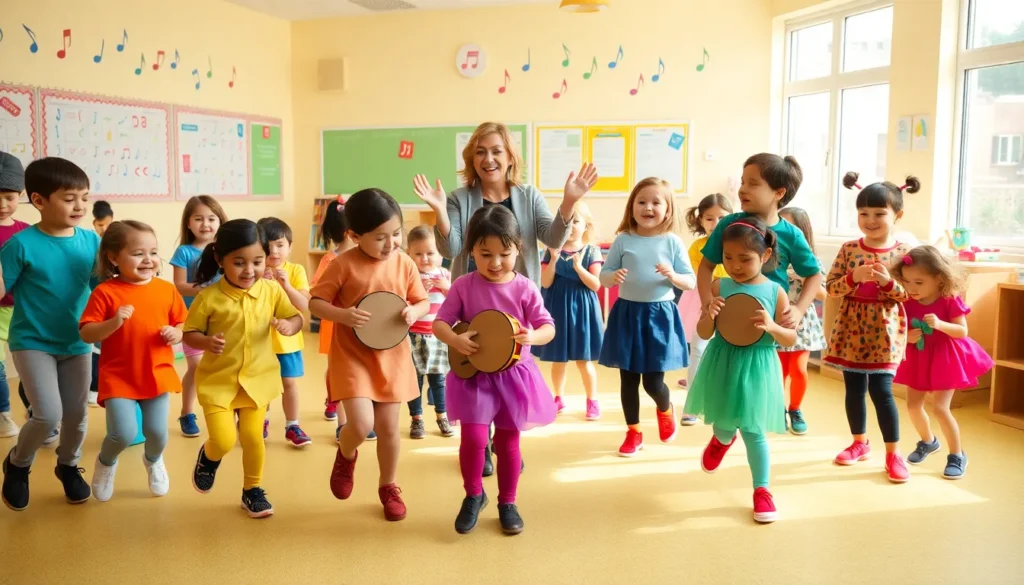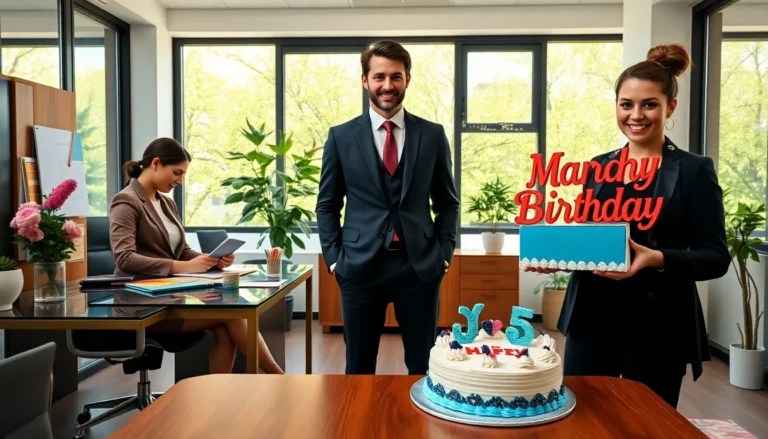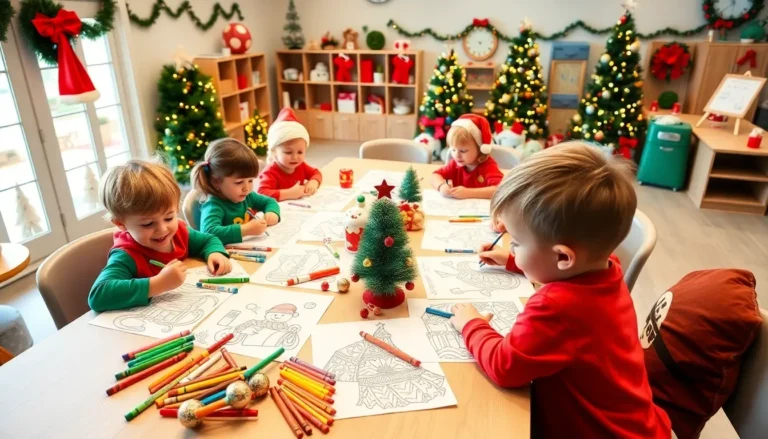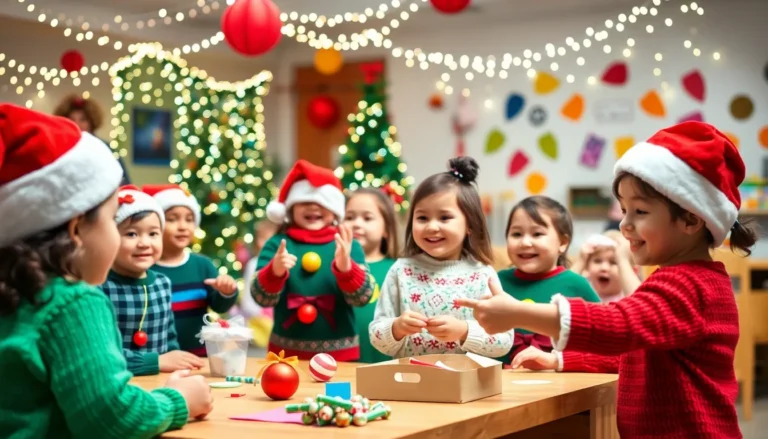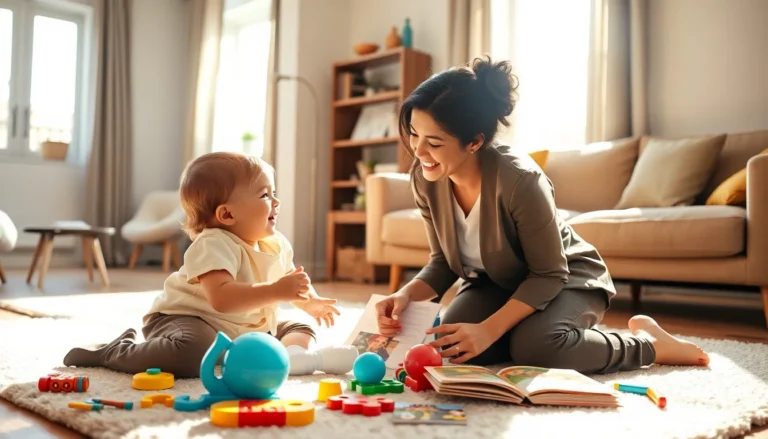Table of Contents
ToggleHave you ever seen a group of preschoolers bouncing around to their favorite tunes? If so, you know just how contagious their joy can be. Music and movement aren’t just fun: they are essential for a child’s development and can turn an ordinary day into an extraordinary learning experience. Think about it: what if the simplest song could aid in physical coordination, cognitive skills, and social interactions? Let’s jump into the vibrant world of music and movement activities that will not only get little feet tapping but also pave the way for holistic growth in preschoolers.
The Importance Of Music And Movement In Early Childhood
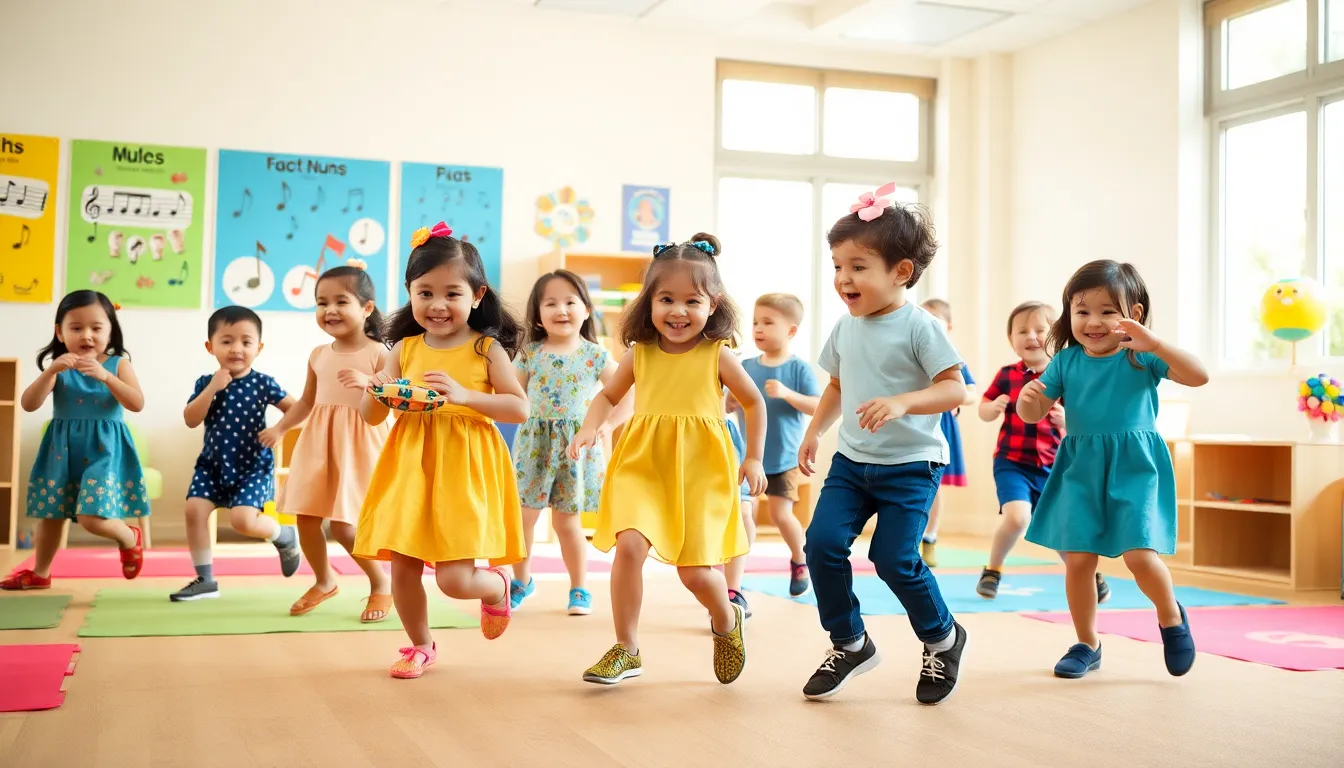
Benefits For Physical Development
Music and movement activities serve as natural outlets for preschoolers to enhance their physical skills. When children skip, hop, or dance, they are practicing gross motor skills and coordination. Through rhythm, they learn how to navigate space effectively, improving balance and strength. These activities not only keep kids active but also foster a sense of confidence in their physical abilities.
Cognitive Benefits Of Music And Movement
Engaging with music stimulates parts of the brain associated with memory, problem-solving, and language. For preschoolers, this translates into improved attention spans and enhanced learning capabilities. When children move to the beat of a song, they are also subconsciously learning patterns and sequences, building foundational skills for math and reading. It’s a win-win situation.
Emotional And Social Development Through Music
Music often brings people together, and for preschoolers, it provides opportunities for interaction and bonding. Participating in group activities encourages cooperation and helps develop social skills. Plus, dancing and making music can be great outlets for emotions, allowing children to express themselves in healthy ways.
Engaging Music And Movement Activities
Interactive Dance Games
Who doesn’t love a good game of freeze dance? Interactive dance games offer a fun way for preschoolers to move while following instructions. These playful activities boost listening skills and self-regulation. Kids relish the simplicity yet enjoy the excitement that comes with dancing and freezing on cue.
Musical Instrument Exploration
From shakers to drums, letting kids explore musical instruments can ignite their creativity. Providing a variety of instruments allows preschoolers to experiment with sound and rhythm. They not only learn to appreciate music but also develop fine motor skills as they grasp and play different instruments.
Creative Movement Exercises
Creative movement exercises encourage children to express their feelings and ideas through body movements. Activities like yoga or free dance allow for self-expression and creativity. Also, gentle balancing and stretching activities can enhance both physical agility and calmness.
Storytime With Music And Movement
Combine storytelling with sound effects or songs to make stories come alive. Storytime can transform when children act out characters or express emotions through movement. This method promotes comprehension and retention while instilling a love for reading.
Incorporating Music Into Daily Routines
Songs For Transition Times
Getting preschoolers ready for a change can sometimes be a chore. But, using songs during transitions, like clean-up or moving to a new activity, can make this process much smoother. A jingle or catchy tune can grab attention and encourage children to follow along effortlessly.
Using Music For Learning Concepts
Integrating music into lesson plans helps reinforce learning concepts. For example, counting songs can enhance numerical understanding, while alphabet tunes boost literacy skills. Making learning interactive through music promotes engagement and enthusiasm among preschoolers.
Celebrating Cultural Diversity Through Music
Introducing children to music from various cultures can expand their worldview and promote inclusivity. This allows preschoolers to celebrate diversity and learn about different traditions. Playing various types of music can spark curiosity and awareness.
Tips For Implementing Music And Movement Activities
Creating A Safe Space For Movement
To take full advantage of music and movement activities, creating a safe environment is crucial. Clear the area of any furniture or obstacles that can cause accidents. Establishing designated movement times encourages children to explore freely, fostering physical development safely.
Integrating Music Across The Curriculum
Incorporate music and movement into various subjects. Engaging activities that align musical exploration with science, math, and social studies can solidify learning. Thematic units can provide a holistic approach, combining several disciplines in one engaging setting.
Encouraging Family Participation
Family Involvement In Music Activities
Involving families in music and movement can enhance preschool experiences. Organizing family dance nights or music sessions encourages bonding and reinforces learning at home. Families who participate actively instill a love for music in their children and strengthen connections.
Resources For Parents And Caregivers
Parents and caregivers can find numerous online resources to support music and movement learning at home. Websites, apps, and community programs offer ideas for songs, activities, and games to continue exploration outside the classroom.

